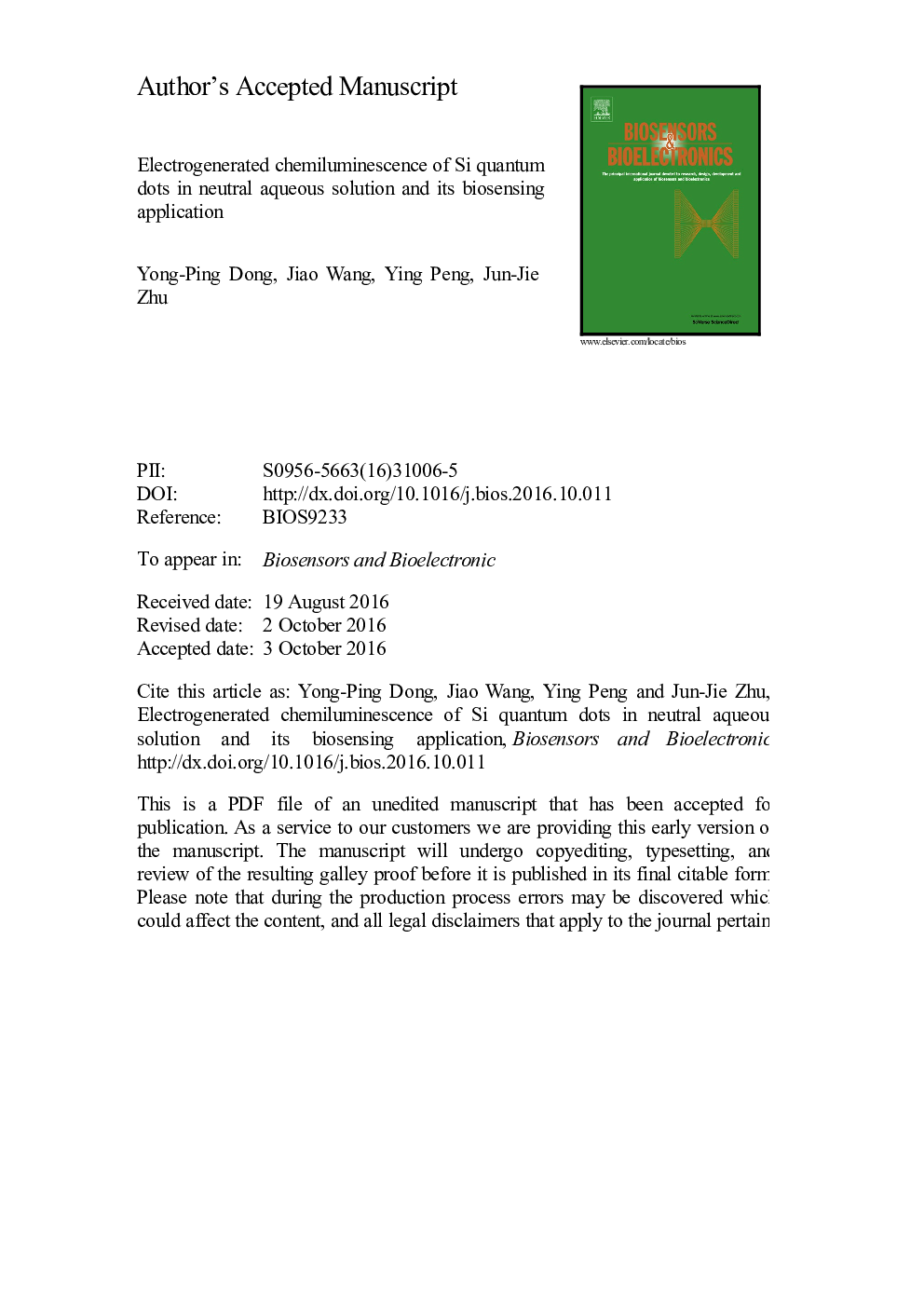| Article ID | Journal | Published Year | Pages | File Type |
|---|---|---|---|---|
| 5031474 | Biosensors and Bioelectronics | 2017 | 22 Pages |
Abstract
Electrogenerated chemiluminescence (ECL) of semiconductor quantum dots (QDs) has been considered as a powerful technique in the fabrication of biosensor, however, high-toxicity of heavy metal ion containing in QDs severely limits their further applications, and the search for the alternative benign nanomaterials with high ECL efficiency is urgent. Herein, ECL behavior of eco-friendly silicon quantum dots (SiQDs) was reported in neutral aqueous condition. Stable and intense cathodic ECL emission was obtained in phosphate buffer solution (PBS) with K2S2O8 as coreactant. ECL resonance energy transfer (ECL-RET) system was established with SiQDs ECL as energy donor and gold nanoparticles (AuNPs) as energy acceptor, based on which a novel ECL biosensor was fabricated. AuNPs was connected at the terminal of hairpin DNA to form a signal probe. When the probe was modified on SiQDs, ECL-RET occurred due to the short distance between AuNPs and SiQDs, resulting in the apparent decrease of ECL signal. Target DNA can open the loop of hairpin DNA, and move AuNPs away from the electrode surface. As a result, the ECL-RET process was hampered, and the ECL emission resumed. The increased ECL signals varied linearly with the target DNA concentrations in the range of 0.1Â fM to 1Â pM with the detection limit of 0.016Â fM (3Ï). The proposed ECL sensor exhibited highly sensitivity and good selectivity in the detection of target DNA.
Related Topics
Physical Sciences and Engineering
Chemistry
Analytical Chemistry
Authors
Yong-Ping Dong, Jiao Wang, Ying Peng, Jun-Jie Zhu,
